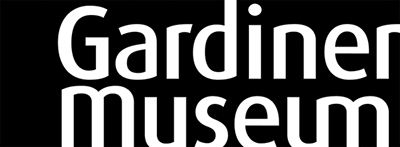Partial Krokus Coffee Service
Manufacturer
Meissen Porcelain Manufactory
(German, founded 1710)
CultureGerman
Date1896
MediumPorcelain, enamels
DimensionsOverall (Tray): 3/8 × 15 3/8 × 14 3/16 in. (1 × 39 × 36 cm)
Overall (Coffeepot): 6 7/16 × 5 11/16 × 3 3/8 in. (16.3 × 14.4 × 8.6 cm)
Overall (Coffeepot Lid): 2 15/16 × 3 5/16 in. (7.5 × 8.4 cm)
Overall (Creamer): 4 1/8 × 3 3/8 × 1 7/8 in. (10.4 × 8.5 × 4.8 cm)
Overall (Beaker): 3 3/4 × 3 1/2 in. (9.5 × 8.9 cm)
Overall (Beaker Saucer): 13/16 × 6 1/8 in. (2 × 15.5 cm)
Overall (Cup): 3 11/16 × 3 × 2 1/8 in. (9.3 × 7.6 × 5.4 cm)
Overall (Cup Saucer): 13/16 × 5 15/16 in. (2.1 × 15.1 cm)
MarkingsTray: crossed swords and 71 (underglaze blue), 126 (impressed), L126 (or J126) (incised)
Coffeepot: crossed swords and 74 (underglaze blue), Q108b (impressed), 133 (impressed)
Sugar bowl: crossed swords and 76 (underglaze blue), 4/ Q110b (impressed)
Creamer: crossed swords and 71 (underglaze blue), 98/Q109b (impressed)
Saucer: crossed swords and 76 (underglaze blue), Q111 (impressed)
Saucer: crossed swords and 71 (underglaze blue), Q111 (impressed)
Cup: crossed swords and 76 (or74) (underglaze blue), Q111 (incised)
DescriptionThe large German porcelain factories were slow to adopt the Jugendstil and the Krokus -déjeuner service marks a turning point for Meissen and other factories. The design was originally made for a competition for “a modern and inexpensive déjeuner (breakfast service) in both shape and decoration,” held by the Meissen management in 1896. Inspired by the crocus blossom - both in the vessel’s shape and in its high-temperature shades of color - Hentschel designed the déjeuner along the lines of the floral art nouveau. The design was exhibited at the Paris World Exhibition in 1900; with more than 25 sets sold, it was considered a great success. Between 1902 and 1904, Hentschel expanded the breakfast service into a larger dinner and tea service. The Krokus-Déjeuner played a pioneering role in the field of utility porcelain in the art nouveau manner. The first example of the genre, it stimulated further experiments by other artists at Meissen.
Credit LineGift of Dr. Robert Siebelhoff
Object numberG12.5.1.1-5
Classifications
European CeramicsSub-classification
German PorcelainCollections
Status
Not on viewArtist / Maker: Rotberg's Factory
c.1785
Object number: G96.5.218.1-.5
Artist / Maker: Jean-Baptiste Guillibaud Manufacture
c. 1730
Object number: G12.14.17.1-2
Artist / Maker: Meissen Porcelain Manufactory
c.1750-1755
Object number: G83.1.652.1-23
Artist / Maker: Saint-Cloud Porcelain Manufactory
1740-1760
Object number: G17.2.1.1-5
Artist / Maker: Chantilly Porcelain Manufactory
c.1735-1740
Object number: G17.2.7
Artist / Maker: Minton
c.1930
Object number: G91.3.130.1-2
Artist / Maker: Meissen Porcelain Manufactory
c.1745
Object number: G83.1.627.1-.11
Artist / Maker: Meissen Porcelain Manufactory
c.1727-1730
Object number: G83.1.596.1-11a-b















